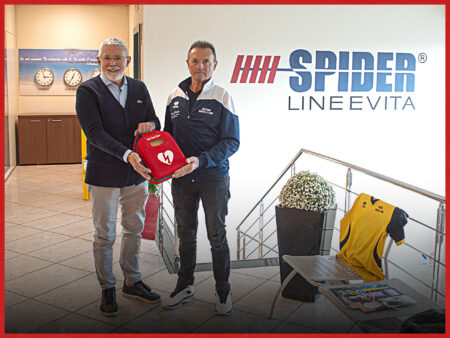
Understanding the dynamics of occupational safety and health is critical in any industry. To obtain information on high-risk occupations and sectors, the European Agency for Safety and Health at Work (EU-OSHA) and the Committee of Directors-General of National Labour Inspectorates (SLIC) conducted a survey, drawing on the experience of labour inspectors across the European Union. As a labour inspector, your insights into the day-to-day realities of high-risk workplaces in Europe are invaluable. The survey revealed some worrying trends in several sectors, including agriculture, construction, transport and health, which merit further analysis and action. The information gathered in the survey will help policymakers and occupational safety and health professionals to better understand the challenges and develop preventive measures to ensure healthier and safer workplaces across Europe.
High-risk sectors in Europe are those where workers are particularly exposed to hazards that can lead to injury, illness or death. Identifying and monitoring these high-risk sectors is key to improving occupational health and safety.
Agriculture is traditionally one of the most dangerous sectors, with a high risk of accidents and occupational diseases such as asthma and dermatitis. Hazards include:
To mitigate these risks, employers should provide adequate personal protective equipment, train employees on the safe use of machinery and chemicals, and ensure frequent breaks in extreme weather conditions.
The construction sector presents multiple dangers including:
-Investments / overturning of construction machinery or vehicles
To prevent these hazards, employers should provide safety training, ensure the use of personal protective equipment and adequate and safe work equipment, demarcate/fence work and excavation areas, and constantly monitor compliance.
The survey conducted by the European Agency for Safety and Health at Work (EU-OSHA), in collaboration with the Committee of Labour Inspectorates of the EU Member States (SLIC), provided a unique insight into high-risk professions and sectors in Europe, through the eyes of labour inspectors. The survey was finalized in March 2021 and launched at the end of April of the same year. It was conducted using a web-based tool, the EU Survey, and the results were collected until mid-June 2021.
In total, 2,096 responses were collected from labour inspectors from almost all Member States, and the distribution of respondents by country followed a pattern similar to the size of the country’s population. Preliminary analysis of the collected data indicated that on average, respondents have been working as labor inspectors for 14 years.
Labor inspectors identified specific occupations as high-risk, including construction workers, stationary plant and machinery operators, unskilled workers in mining, construction, manufacturing and transportation, and skilled workers in the agricultural, forestry and fishing industries. These professions are mainly present in sectors such as construction, manufacturing, agriculture, forestry and fishing.
In addition to specific occupations, the report highlighted that foreign workers and transferees (those who do not have a permanent job and who have to move, even between countries) are considered high-risk groups. Labour inspectors found that 31.73% of foreign workers and 8.87% of transfer workers are at risk. This can be attributed to the fact that work on the road is generally more difficult to monitor and achieve.
Surprisingly, the report also found that more than half of the inspectors do not consider additional provisions during inspections for seasonal, posted or relocation workers, such as housing or living conditions. This is relevant because© in many Member States these provisions are the responsibility of other authorities dealing with social protection and rights.
In Italy, the challenges outlined in the report are reflected in the labour market. Even in Italy, sectors such as construction, manufacturing and agriculture are considered high risk. To address these emerging risks, Italian authorities must recognise the importance of developing appropriate tools and methods. This may include training labour inspectors, developing new tools and methods for inspection, and promoting a preventive culture involving all stakeholders.
The EU-OSHA survey has shown that data collected through labour inspector surveys can be a valuable new source of information on OSH, helping to identify priority actions and identify emerging issues.
Recall that in addition to traditional safety risks, the survey highlighted the importance of considering other risk factors, such as those related to mental health and well-being of workers. Labour inspectors have indicated that risks related to mental health and well-being are often overlooked, despite being equally important for the safety and health of workers.
Labor inspectors reported facing a number of challenges during the COVID-19 pandemic. These challenges include the need to ensure that workplaces are safe and healthy, despite the restrictions and difficulties caused by the pandemic. In addition, many labor inspectors reported having to perform additional tasks related to COVID-19 during inspections.
The survey highlighted the importance of the role of labour inspectors in promoting occupational safety and health in Europe. He also stressed the importance of continuing to develop and improve labour inspection methods to address emerging risks and ensure worker safety.
Finally, we remind you that occupational safety and health is a crucial issue that requires constant commitment from all stakeholders, including employers, workers and competent authorities. With the rise of remote work and new technologies, it is more important than ever to ensure that all workers are protected from workplace risks, regardless of their industry or profession.
The information gathered in this survey provides valuable insight into high-risk professions and sectors in Europe, and we hope that this information can be used to further improve the safety and health of workers across the European Union.
Fonte: Labour inspectors' insights into perceived high-risk occupations and sectors in Europe: an EU-OSHA-SLIC survey - Ioannis Anyfantis, European Agency for Safety and Health at Work (EU-OSHA) and Senior Labour Inspectors Committee (SLIC) Working Group Strategy - European Agency for Safety and Health at Work, 2023 - https://osha.europa.eu/it/publications
 Agevolazioni
Agevolazioni
 Events
Events